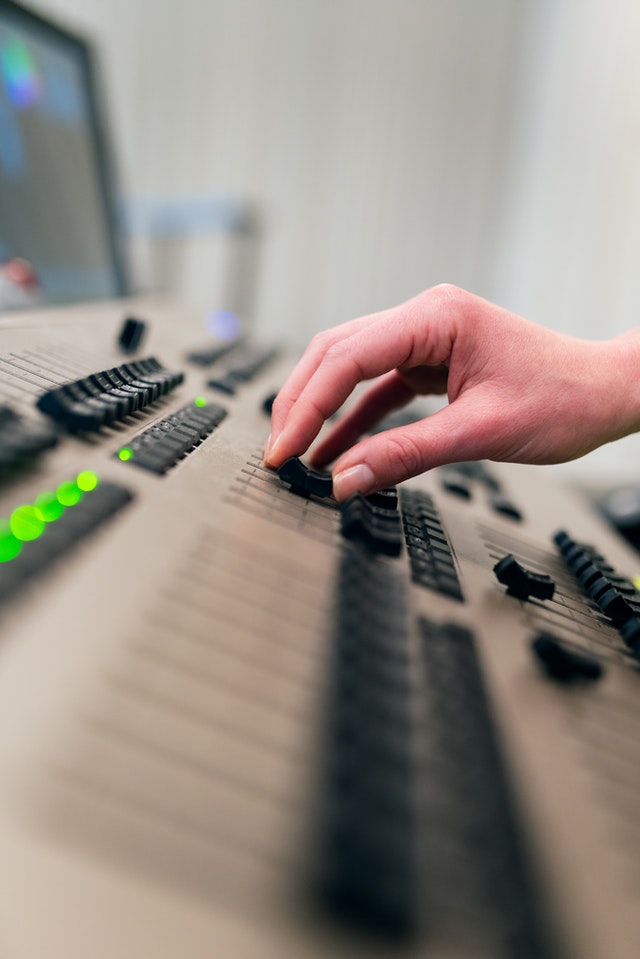What is Mixing and Mastering?

Mixing and mastering may seem like two sides of the same coin to most independent musicians.
Some musicians might write-off the mixing process under the assumption that flaws can be fixed in the mastering process.
Others might not approach mastering because they don’t have the budget or misunderstand its benefits.
It’s true, mixing and mastering share many similarities in the music production process and many musicians do not fully understand the differences between the two stages.
Naturally, this confusion leads to some misinformation among music producers.
In this article, you will learn some of the key differences between mixing and mastering in a professional music studio and why both steps are important to your finished tracks and how Evermore Sound can help you to achieve your mixing and mastering goals for your projects.
What Does a Mixing Engineer Do?
Mixing is the first step in the post-production process.
After all of your tracking is complete, the mixing engineer will begin to work their magic.
The job of the mixing engineer is essentially to balance the rough tracks into a cohesive and beautiful song.
Think about it like cooking a meal.
The rough tracks are like the ingredient list; you can’t make a meal without them, but they hardly make a meal standing alone.
The mixing engineer is like the chef who takes the rough musical ingredients and blends them together into a wonderful experience that simultaneously highlights and preserves the character of each ingredient.

This task is accomplished via a number of tools in a professional music studio such as equalization (or EQ), compression, panning, and reverb among others.
While the mastering engineer uses some of these tools as well, the bulk of this work is done by the mixing engineers.
Equalization is used to remove any unwanted frequency ranges in a particular sound.
For example, some mid-range areas on the guitar can muddy a mix and are often removed, whistling, high-end frequencies in a crash cymbal might be cut down, or a low frequency between a floor tom and bass guitar that resonates in a distasteful way might be reduced.
Compression helps to balance dynamic ranges in a track and can effectively act as a glue between different sounds or instruments.
Panning is used to create interest and space in a stereo track and to ensure that each instrument fits in its own particular place.
Finally, reverb is used to add depth and character to individual instruments and to groups of instruments.
This step helps to blend sounds together that might otherwise sound disjunctive or removed from one another.
The mixing engineer uses a combination of these tools and more to balance your rough tracks.
Depending on the complexity of your project and the number of tracks, this can be a relatively simple process or it can be deep and time consuming!
At the end of the project, the mixing engineer bounces (exports) a stereo mixdown for the mastering engineer.
What About the Mastering Engineer?

The job of the mastering engineer is somewhat more mysterious than that of the mixing engineer.
The mastering engineer’s main task is to fine-tune the tracks from the mixing engineer to ensure that there is a cohesive character across the entire project.
The mastering engineer might do some adjustment to volumes and overall EQ, but cannot make any changes to particular mixing elements like the reverb on a track or a specific fader automation. Additionally, the mastering engineer is responsible for the final fades on tracks, the spacing between multiple tracks, and the addition of tracking and sales codes like ISRC and UPC/EAN, which are important if you plan to stream or sell your tracks digitally.
Perhaps the mystery of the mastering engineer lies in their environment.
While a mixing engineer will work across multiple platforms to ensure that a particular mix sounds solid on many different speaker types and in many different settings, a mastering engineer works in an ultra-quiet, specially-designed professional music studio.
Since the mastering engineer is the last one to make edits to a track, it is crucial their professional music studio be highly-tuned to the craft and free of any noise or distraction.
This ensures that any small flaws that might have been missed in the mixing process are rooted out and that the project sounds convincingly cohesive across all the tracks.
Differences in Workflow
The nature of the workflow is a key difference between mixing and mastering engineers.
The mixing engineer essentially starts their work with a lump of partially formed clay.
The first and most important step in their work is organizational and includes labeling and color-coding the tracks in a DAW (digital audio workstation) and creating instrument groups and submixes.

If you are mixing your own tracks, you can take care of most of this organization while you record to save yourself time and energy.
After the tracks are organized, the mixing engineer can begin the creative process of blending them into a cohesive and balanced song.
Depending on the quality of the rough tracks, this process can take anywhere from a few hours to a few days for each song.
This means that a mixing engineer will have to listen to hours and hours of music in their professional music studio to successfully mix a 10 or 12 song project!
The work of the mastering engineer is considerably more narrow in scope, but equally important to that of the mixing engineer.
Naturally, since the mastering engineer works with a stereo mixdown from the mixing engineer, they do not have to do the same amount of organizational work the mixing engineer does.
In general, the mastering engineer takes into consideration:
- What does this song need to match genre and market standards?
- Appropriate volume levels for release format, character, and genre
- Broad EQ and compression to ensure consistency between tracks
- Overall flow and structure of the album project as a whole
- Prepare finished tracks with documentation codes
The changes made to a track during the mastering process are considerably more subtle than the work of the mixing engineer and can generally be completed within a day.
The Tools of the Trade
Mixing and mastering engineers use many of the same tools, with a few key differences.
Mixing engineers work in a wide range of DAW’s including Pro Tools, Ableton, Logic, or Cubase.
Their primary tools are EQ, compression, reverb, delay, and modulation effects, saturation, and other character-enhancing effects.

Mixing engineers tend to apply these tools to individual tracks or groups of tracks and less frequently to the stereo output of an entire project.
Mastering engineers, on the other hand, apply their tools to the stereo mixdown and cannot edit individual tracks.
At a basic level, the mastering process is about improving the sound quality of a stereo mix.
This means that basically any DAW that hosts plug-ins can work for mastering, but the industry standard is Avid’s Pro Tools.
Mastering engineers also use specific programs to write in documentation to tracks for tracking and sales.
These codes help ensure protection against music piracy and allow your tracks to be sold digitally in online music stores, which is a major market for music.
The mastering engineer also uses a special compressor called a limiter to help bring tracks up to market standard volumes.
A limiter at the end of the mastering signal chain allows the engineer to boost the quieter parts of a track without sacrificing the clarity of the louder parts.
Most every contemporary song you hear on the radio or streaming from a professional music studio has some amount of limiting on it.
What are ISRC and UPC/EAN Codes?
The International Standard Recording Code (ISRC) is a 12 character code used to uniquely identify sound and music video recordings.
An ISRC identifies a specific recording of a song, which is considered as a separate entity from the work itself for licensing and ownership purposes.
Different recordings, remixes, and edits of the same song all have different ISRC codes. ISRC codes can be embedded in MP3, M4A, AAC, FLAC, and WAV files.

If you are a music producer interested in selling your music digitally, you will want to make sure you have ISRC codes for your tracks.
UPC stands for Universal Product Code.
It is a barcode widely used in the United States and Canada to track trade items in stores.
UPC consists of 12 numeric digits and is a requirement for most digital music stores.
EAN codes, or European Article Number codes, are 13 digit tracking codes that are used in most every other country worldwide.
The bar codes are almost identical with the exception of the layout of numbers.
What Can Evermore Sound Do for You?
Mixing
Evermore Sound is the premier professional music studio in Orlando for mixing and mastering projects.
Nothing is premade at Evermore Sound. Instead, our music producers are prepped for sophisticated, high-track count mixing projects uniquely set to your specific sound.
Mix engineer and music producer Luke Beaulac processes your tracks to weave together separate strands into the final tapestry of your finished song.
At Evermore Sound, elite gear and premium plugins ensure that the tracks come together seamlessly.

With decades of experience working with musicians in all genres, Luke Beaulac knows how and when to intervene - when to polish the sound, soften or sharpen an edge, and when to step back and let the sound be.
Mastering
Rich, deep, resonant, finely grained sound that is full of life and warmth is achieved through careful and deliberate mastering techniques.
Bigger isn't always better, nor is louder (although we certainly are not strangers to bigger and louder).
Instead, Evermore Sound seeks out the right quality of sound for you and your project.
That sound - its texture, shape, style, and timbre - then enhances the flow and vibe of your music.
Mastering can be an elusive beast for many musicians.
What is it exactly? Is it just more mixing?
Having the proper master can take your tracks from 100% to 110% and add that extra weight, depth, and character to make your tracks truly stand out from the crowd.
Our highly skilled and experienced audio engineers make Evermore Sound the favored recording studio in Orlando for mastering work.
Whether you are finishing your master project here, or bringing us tracks from another studio, you will not be disappointed with our top-notch mastering skills.

Check it out for Yourself
Interested in learning more about the recording, mixing, and mastering process at Evermore Sound?
Check out these samples of our work here.
So whether you are a singer-songwriter with an acoustic guitar, a rock trio, string quartet, or large jazz ensemble, Evermore Sound offers the services and packs the knowledge and experience to bring all your music projects to life.
Our bespoke, in-house recording, editing and sound design, mixing, and mastering services are tailored to suit your style, project, instrumentation, and budget.
Ready to begin? Drop us a line and introduce yourself and share a little about your project and we can go from there!




